Japanese traditional hand flush genre-"Matsuya hand flush" extraction concept explanation _ Matsuya hand flush how to flush
Professional coffee knowledge exchange more coffee bean information please follow the coffee workshop (Wechat official account cafe_style)
On weekdays, I have heard a lot about the flow of one knife and three knives. Today, I will explain to you a more peculiar traditional Japanese hand-chong school--
Pine house hand punch
According to legend, the "pine house" method was invented by Panasonic and Yi in 1962. He developed a filter paper that does not interfere with the expansion of the powder layer and a corresponding metal frame to maintain the angle of the filter paper. What is special about this hand-punching method is the use of coarse ground coffee powder, which is stewed for a long time. When brewing, first dig a large hole in the coffee powder, then pour out a thin column of water from high to down above the filter cup until the coffee liquid begins to drip, and then, like drawing a circle, draw a circle to wet the coffee powder, cover and steam for 3 minutes. After 3 minutes, start to inject water evenly and uninterruptly. when the coffee liquid reaches half of the coffee pot, stop injecting water, and finally add hot water to dilute it.
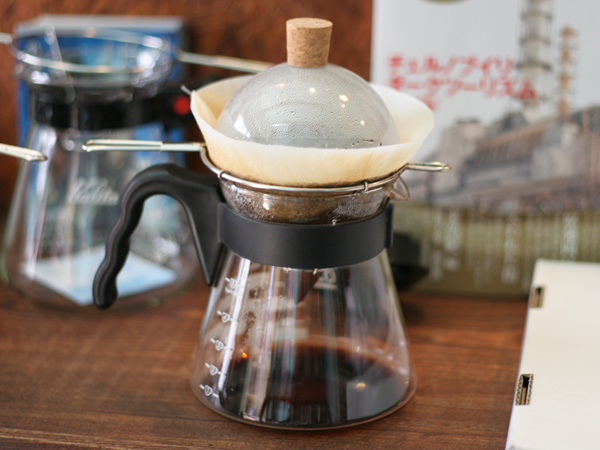
At first glance, the pine house hand flushing sounds very simple, but it seems that get doesn't get the point. Don't worry, just listen to the editor.
Matsuya hand flushing is the earliest systematic teaching method in Japan. It has been popular in Japan for a long time and is widely loved by shopkeepers.
The pine house hand flushing has five major features:
First, keep the taste unchanged for a long time-make the brewed coffee stable at any time and retain the quality just out of the pot.
Second, reduce the extraction deviation-can greatly reduce the difference between the same bean cup, and improve the extraction stability.
Third, the refreshing and clean flavor is displayed.
Fourth, simple, fast and easy to start, easy to learn is not difficult to master, without hand experience can also be easy to use.
Fifth, it is easy to adjust the preference concentration and easily simulate the powder configuration of coffee flavor optimization.
The purpose of brewing with a special Waku filter is to use a simple concept and a technique that can be practiced in a short time to produce coffee liquid with high drinkability and high stability, which is not easy to deteriorate.
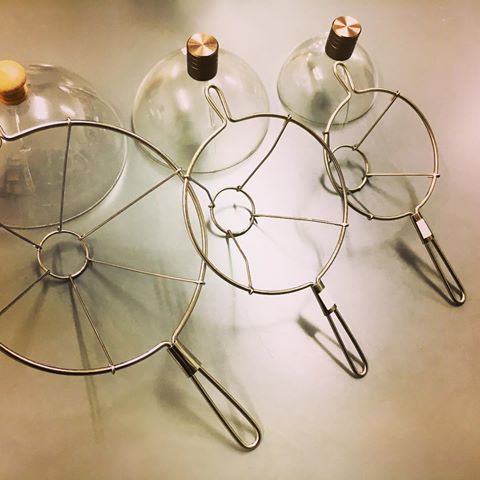
Taste: the coffee brewed out in this way will not become turbid even if the coffee flavor changes little after a period of time. The flavor is clean and refreshing, easy to drink, and there is absolutely no unacceptable flavor, which means that you can easily share the beauty of coffee with more friends.
In fact, the concept of pine house extraction has another advantage: under the premise that the coffee beans are still exuberant when the coffee beans are just roasted, the use of pine house hand flushing can still maintain sufficient extraction rate and clean taste.
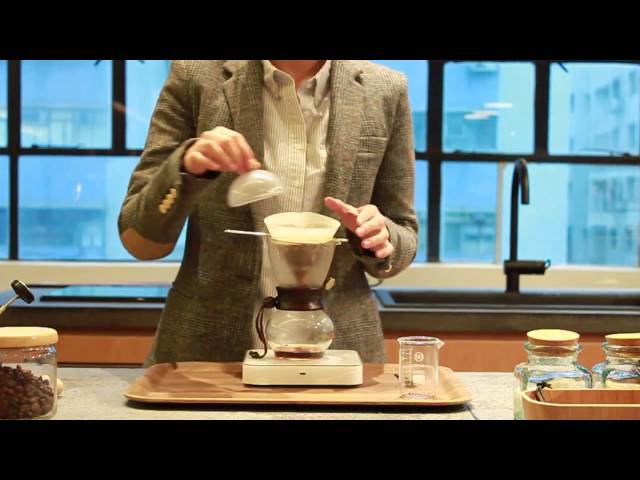
So how do you do pine house cooking?
People who have seen the relevant brewing or video will have a profound impact: the pine house hand-made method of "evenly pasting the coffee powder on the filter wall" and "covering and steaming" is very different from other hand-brewing genres. Its real purpose is not only to "avoid freshly baked dryness and carbon dioxide interference", a more complete statement is: "to make the coffee powder state consistent when entering the extraction stage."

To be clear, we usually use steaming for the same purpose, but we should all have this experience. With the passage of time, the process of steaming beans will become less and less inflated (it looks less and less pleasing to the eye). Therefore, the effect of pre-extraction is not the same as that of 30 seconds after tomorrow. And unless we accumulate the use of scientific instruments to calculate, there is no way to know that today's 30 seconds is the effect of a few seconds after tomorrow.
The elders of Matsuya are even more troubled by this. In addition to having to face several coffee beans in the store that have different exhaust conditions every day, they have to find ways to extract the coffee today and the day after tomorrow; they also have to face the problem that the coffee beans may have been stored for two months after the guests return home.

Finally, one day the seniors broke out--
They decided that since they could not catch the state of exhaust, I would simply drain all the gas! (angry!)
In this way, whether it is just baked for a day or two months, the state of the coffee powder before brewing will be the same!
Therefore, there are the first two steps of the pine house style:
"remove the coffee powder and paste it evenly on the filter wall" and "cover and steam for three minutes"
But all the gas has been drained out, so it is not easy to flood and lead to insufficient extraction in the process of cooking. For ho, that's true--
So Matsuya's seniors in order to improve this point, the coffee will be ground hin thick, along with the increase in water temperature.
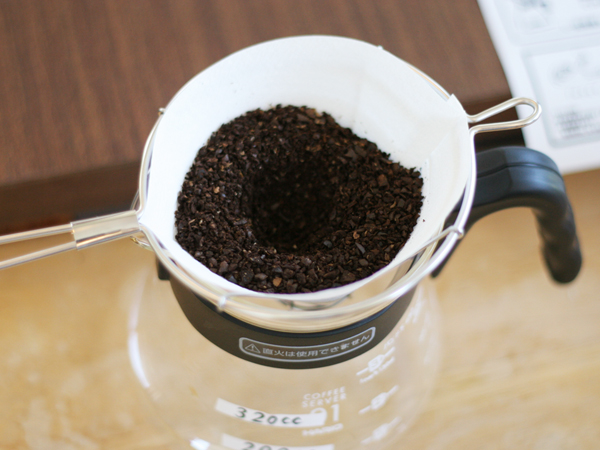
Then found that it still does not work, too high temperature will still bring out the astringent substances on the surface of coffee powder, but the problem of lowering the water temperature is that it was in the 1850s and 1960s. In those days, it was impossible that every household was equipped with a thermometer, so the problem of being complained about was still unsolved.
So decided to maintain the original high water temperature, that is, the water was poured into the pot as soon as it was boiled, so that the temperature in the hand flushing pot was about 95 ℃, but the water column was pulled very high (30cm) to solve both the problems of high water temperature and insufficient extraction power.
Then, due to the long exhaust and water absorption of the coffee powder, the flavor substances have been easily released, so the powder-to-water ratio of 1:10 was supposed to be changed into a large number of flavor substances into the coffee at 1:5. If you go on, the coffee powder will begin to release miscellaneous smells, but because the coffee liquid brewed in this way is very strong, you still need to add water to dilute it back to the powder-to-water concentration at 1:10.
So the result of the development of the whole set of technology is:

1. Folding filter paper.
two。 Put the coffee powder (10murmur12g per person) into the filter paper and grind the scale hen thick.
3. Use a spoon to dig a big hole in the middle, remove the coffee powder and paste it evenly on the filter wall.
4. Using 95 degrees hot water, fill it with a very small water column from about 30 centimeters away from the filter, starting from the center, and then wet all the powder in a circle after entering the kettle.
5. Cover the filter with a lid, and the steaming time is based on three minutes.
6. After venting, use 95 degrees hot water and fill it with a very small water column from about 15 cm from the filter until the pot to 1:5 the powder is better than the coffee liquid (EX:20g powder extract 100c.c. Coffee liquid).
7. Add double hot water and dilute to 1:10 powder / water ratio.
In the past, when introducing the Japanese cooking method, I often heard a saying: "it is very difficult for Japanese coffee shops to share the cooking method clearly. They always like to make the method mysterious and difficult, and it is difficult for neuroticism to repeat verification."
In fact, no, some Japanese veterans are very keen to share their experiences, but for one thing, they may not understand the SCA terminology used by the mainstream coffee industry.
Second, there is a long-standing technique, in which the details have been verified and perfected by several generations, and once there are many details, it is inevitable that there are some places that are difficult to convey in the professor. if it is not experienced in person, it is really difficult to understand the purpose of each particular attention.
END
Important Notice :
前街咖啡 FrontStreet Coffee has moved to new addredd:
FrontStreet Coffee Address: 315,Donghua East Road,GuangZhou
Tel:020 38364473
- Prev
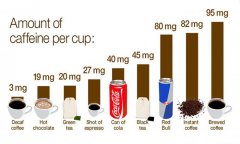
Caffeinated drinks are harmful to the growth of teenagers, and the British and new governments suggest that consumption be reduced or even avoided.
Professional coffee knowledge exchange more coffee bean information Please follow the coffee workshop (Wechat official account cafe_style) it is well known that caffeine (Caffeine) can be refreshing, caffeine is found in many drinks, such as coffee, refreshing drinks, tea and even soda. However, the bodies of children and adolescents are in the stage of development, and excessive caffeine intake is not conducive to growth. Puberty is recommended.
- Next
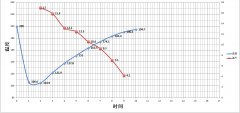
Can the coffee baking curve really be copied? How to copy the Starbucks coffee baking curve?
Professional coffee knowledge exchange more coffee bean information Please follow the coffee workshop (Wechat official account cafe_style) Today I would like to talk about one of the most important concepts that are often overlooked by beginners: assuming that everything else remains the same, copying the baking curve makes sense with the increasing transparency of online information transmission, you can easily achieve the curve of coffee baking champion in an international competition in a certain year; then learn for beginners.
Related
- Beginners will see the "Coffee pull flower" guide!
- What is the difference between ice blog purified milk and ordinary milk coffee?
- Why is the Philippines the largest producer of crops in Liberia?
- For coffee extraction, should the fine powder be retained?
- How does extracted espresso fill pressed powder? How much strength does it take to press the powder?
- How to make jasmine cold extract coffee? Is the jasmine + latte good?
- Will this little toy really make the coffee taste better? How does Lily Drip affect coffee extraction?
- Will the action of slapping the filter cup also affect coffee extraction?
- What's the difference between powder-to-water ratio and powder-to-liquid ratio?
- What is the Ethiopian local species? What does it have to do with Heirloom native species?

